Category: NPK fertilizer production line manufacturer
How to make small scale npk fertilizer
Creating NPK fertilizer on a small scale can be an enriching endeavor for home gardeners, small farms, or even start-up fertilizer producers. NPK stands for Nitrogen (N), Phosphorus (P), and Potassium (K), the three primary nutrients required for healthy plant growth. Here is a comprehensive guide on how to make small-scale NPK fertilizer.
Understanding NPK Ratios
Before diving into production, it’s crucial to comprehend the NPK ratio, which reflects the proportion of nitrogen, phosphorus, and potassium in the fertilizer. The specific needs of the plants being grown will dictate the ideal NPK ratio. A balanced 10-10-10 ratio is a common general-purpose fertilizer, but depending on the crop’s requirements, these ratios can vary.
Sourcing Raw Materials
Nitrogen Sources: For small-scale production, nitrogen can be sourced from blood meal, fish meal, or composted manure. Synthetic options include urea or ammonium sulfate.
Phosphorus Sources: Bone meal is a natural source of phosphorus. Alternatively, rock phosphate can be used if it is ground into a fine powder.
Potassium Sources: Wood ash is a natural source of potassium. Potassium sulfate or potassium chloride can also be used for a more concentrated source.
Equipment and Space
Basic Equipment
- Weighing scales for accurate measurement of ingredients
- Mixing tools such as a shovel or a mechanical mixer
- Protective gear like gloves and masks to prevent inhalation of dust
- Storage containers for both raw materials and the final product
Space Requirements
The space needed for small-scale production can be as simple as a well-ventilated shed or garage. Ensure the space is dry to prevent the fertilizer from clumping and that it is safe from contamination.
Production Process
Step 1: Measuring Ingredients
Using your weighing scales, measure out the raw materials according to the desired NPK ratio. Precision is essential here as it ensures the effectiveness of the final product.
Step 2: Grinding and Mixing
If the raw materials are not already in powdered form, they will need to be ground. Once powdered, mix the ingredients thoroughly to create a homogenous blend. A mechanical mixer can ensure a uniform mix, which is crucial for the fertilizer’s efficacy.
Step 3: Granulation (Optional)
For easier application, the mixed fertilizer can be granulated. Small-scale granulation can be done manually by creating small pellets and drying them, or with the use of a granulation machine. Compaction equipment is suitable for making small scale npk fertilizer.
Step 4: Curing and Drying
The mixture should be left to cure, which can take anywhere from several days to weeks. During this time, the chemical reactions between the components will occur. Following curing, the mixture should be completely dried to prevent mold or caking.
Step 5: Packaging and Storage
Once dry, the fertilizer can be packaged in airtight containers or bags. Label the packages with the NPK ratio and any instructions for use. Store the fertilizer in a cool, dry place until it’s ready to be used.
Safety Considerations
- Always wear protective gear to prevent skin irritation or inhalation of dust.
- Store raw materials and the final product safely to prevent contamination or accidental ingestion by children or pets.
- Ensure good ventilation when mixing and packaging the fertilizer.
Application Guidelines
To use the NPK fertilizer, follow the general rule of thumb of applying it every two to four months, depending on the crop’s needs. However, it’s essential to conduct soil tests to avoid over-fertilization, which can be harmful to plants and the environment.
Conclusion
Making small-scale NPK fertilizer can be a cost-effective and rewarding process, ensuring that the right balance of nutrients is available for plants. With careful planning, accurate measurements, and proper safety precautions, gardeners and small-scale farmers can produce their own high-quality fertilizer to foster bountiful growth and yields. And if you are interested in setting up a npk fertilizer plant, we can provude you with the best solution.
Why NPK Production Line Is So Prosperous
In the world of agriculture, fertilizers play a pivotal role in ensuring healthy plant growth and maximizing crop yields. One of the most popular and balanced fertilizers used globally is NPK, which stands for Nitrogen (N), Phosphorus (P), and Potassium (K). These three essential nutrients are critical for plant health, each serving a unique function within the plant’s lifecycle. In this blog post, we’ll take an in-depth look at the NPK production line and how it creates this vital agricultural input.
Understanding NPK Fertilizer
NPK fertilizer is a complex fertilizer comprised of three primary nutrients required for healthy plant growth:
- Nitrogen (N): Promotes leaf growth and is crucial for the synthesis of proteins and chlorophyll.
- Phosphorus (P): Encourages root development, flower and fruit production, and energy transfer within the plant.
- Potassium (K): Aids in water uptake, enzyme activation, and overall plant vigor.
The ratio of these nutrients can vary depending on the specific needs of the crop or the soil conditions, and they are represented by three numbers on the packaging (e.g., 15-15-15).
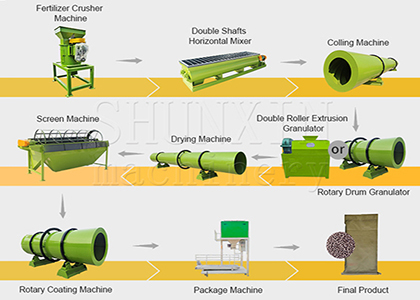
NPK fertilizer manufacturing equipment for sale
The NPK Production Line Process
The production of NPK fertilizer is a complex and intricate process that combines various chemical substances containing nitrogen, phosphorus, and potassium. Here’s a general overview of how the NPK production line works:
- Raw Material Batching: The first step in the production process is batching, where the raw materials (urea, ammonium phosphate, potassium chloride, and other additives) are proportioned precisely to achieve the desired NPK ratio.
- Material Mixing: The batched raw materials are then moved to a mixer, where they are thoroughly blended to ensure an even distribution of nutrients.
- Granulation: This is the key step in npk fertilizer production process. After mixing, the material is fed into a granulator. Here, the mixture is agglomerated into granules. This can be done using different granulation techniques, such as drum granulation, pugmill granulation, or pan granulation. Click here to learn more.
- Drying and Cooling: The granules are then transferred to a dryer to reduce the moisture content, ensuring the stability of the granules. After drying, the granules are cooled to near room temperature in a cooler to prevent caking.
- Screening: Once cooled, the granules pass through a screening process. This segregates the granules by size, recycling any that are over or undersized back into the preparation line of npk fertilizer.
- Coating: The granules may be coated with a substance to enhance their properties, such as improving their physical characteristics or reducing dust formation.
- Packaging: Finally, the finished NPK granules are conveyed to a packaging machine where they are packed in bags ready for distribution and use.
Machines Used in the NPK Production Line
Several specialized machines are deployed within an NPK production line to ensure efficient and quality fertilizer production for npk compound fertilizer manufacturers:
- Batching Machine: This machine accurately measures the raw materials based on the specified formula.
- Mixer: Mixers such as vertical mixers, horizontal mixers, or double-shaft mixers are used to create a homogeneous blend of raw materials.
- Granulator: Depending on the technology used, this can be a rotary drum granulator, disc granulator, or a double roller press granulator, among others.
- Dryer: Rotary drum dryers are commonly used to reduce the moisture content of the granules.
- Cooler: Often a rotary drum cooler is used, working on the same principle as the dryer but with cooling air.
- Screening Equipment: Rotary drum screening machines separate the granules by size.
- Coating Machine: A rotary drum coater applies a coating agent to the fertilizer granules.
- Packaging Machine: An automatic packaging machine weighs and fills the bags, which are then sealed and stacked.
Environmental and Sustainability Practices in NPK Production
Modern NPK production line design has sustainability in mind. They often incorporate waste recycling systems, dust collection, and water reclamation processes to minimize environmental impact. Manufacturers are continually improving the efficiency of the production process to reduce energy consumption and lower greenhouse gas emissions. You can visit https://fertilizerequipmentmanufacturer.com/npk-fertilizer-production-line/ to get more information.
Conclusion
The NPK production line is a marvel of modern industrial engineering, turning basic chemical components into the building blocks of agricultural productivity. By understanding the intricacies of the NPK production process and the importance of the nutrients it provides, we can appreciate the science and technology that go into supporting global food production. As our population grows and the demand for food increases, the role of efficient, high-quality NPK fertilizer production becomes ever more crucial.
How to Manufacture 19:19:19 NPK Fertilizer?
NPK fertilizer, also known as compound fertilizer, is a blend of three essential nutrients required for plant growth: nitrogen (N), phosphorus (P), and potassium (K). The ratio 19:19:19 signifies the percentage of each nutrient present in the fertilizer. This balanced formulation provides a well-rounded nutrient supply to plants, promoting healthy growth and optimal yield. Manufacturing 19:19:19 NPK fertilizer involves several steps, from sourcing raw materials to the final packaging. In this guide, we will outline the process, including key considerations and techniques.

compound fertilizer production line
- Raw Material Selection: The first step in manufacturing 19:19:19 NPK fertilizer is selecting high-quality raw materials. These materials typically include ammonium nitrate, urea, ammonium phosphate, and potassium chloride. It is essential to ensure the purity and quality of these components, as they directly affect the final composition and effectiveness of the fertilizer. Analyzing and testing the raw materials for impurities and nutrient content is crucial for maintaining consistency in production.
- Crushing and Grinding: Once the raw materials have been procured, they are subjected to crushing and grinding processes. This step aims to break down the materials into smaller particles, enhancing their solubility and improving nutrient availability. Specialized equipment, such as crushers and grinders, are used to achieve the desired particle size.
- Mixing and Blending: After crushing and grinding, the individual components are thoroughly mixed and blended together. The mixing process ensures uniform distribution of nutrients throughout the fertilizer. Various mixing techniques, such as paddle mixers or rotary drum mixers, are employed to achieve homogeneity.
- Granulation: Granulation is a critical step that transforms the blended fertilizer into granules. Granules are easier to handle, store, and apply, providing controlled release of nutrients. There are different granulation methods available, including drum granulation, pan granulation, and extrusion granulation. These techniques involve adding binders or water to the mixture to form granules of the desired size.

double roller granulation compound fertilizer making plant
- Drying: Following the granulation process, the newly formed granules are subjected to drying. Drying removes excess moisture and stabilizes the granules, preventing clumping and ensuring a longer shelf life. Dryers, such as rotary dryers or fluidized bed dryers, are commonly used for this purpose.
- Cooling: Once dried, the granules are cooled to ambient temperature. Cooling helps to solidify the granules and further enhance their stability. Cooling can be achieved through natural air cooling or specialized cooling machines.
- Screening and Sizing: After cooling, the granules undergo screening and sizing processes to remove any oversized or undersized particles. Proper sizing ensures a consistent product with uniform nutrient content. Vibrating screens or sieving machines are commonly employed for this purpose.
- Coating and Additives (Optional): In some cases, additional coatings or additives may be applied to the granules to improve their performance or enhance specific characteristics. These coatings can include polymer coatings, slow-release coatings, or micronutrient coatings. Such additions help to tailor the fertilizer to meet specific crop and soil requirements.
- Quality Control and Testing: Throughout the manufacturing process, quality control measures should be implemented to ensure the fertilizer meets the desired specifications. Regular testing for nutrient content, particle size distribution, moisture content, and other parameters is crucial to maintain consistency and effectiveness. Adjustments can be made during production based on the test results to achieve the desired NPK ratio.
- Packaging and Storage: The final step involves packaging the 19:19:19 NPK fertilizer in suitable containers, such as bags, sacks, or bulk packaging. Proper packaging ensures protection against moisture, contaminants, and physical damage. Additionally, labeling the packages with relevant information, including nutrient content, application instructions, and safety precautions, is essential.
Conclusion: Manufacturing 19:19:19 NPK fertilizer requires careful selection of raw materials, precise blending, granulation, drying, and quality control processes. Following these steps ensures the production of a high-quality fertilizer product that provides balanced nutrition to plants. It is important to adhere to safety standards, employ appropriate equipment, and regularly test the fertilizer to maintain its efficacy. With proper manufacturing techniques, 19:19:19 NPK fertilizer can contribute to improved crop yields and healthier plants, supporting sustainable agriculture practices.
Compound NPK Fertilizer Production Line
Fertilizers play a crucial role in modern agriculture, aiding in the replenishment of essential nutrients required for plant growth. Among the various types of fertilizers available, compound NPK (nitrogen-phosphorus-potassium) fertilizers have gained significant popularity due to their balanced nutrient composition. These fertilizers are formulated by combining nitrogen, phosphorus, and potassium in specific ratios, providing a comprehensive solution to address the nutrient requirements of crops. The compound NPK fertilizer production line is a specialized system designed to produce these fertilizers efficiently and in large quantities.
Components of the Compound NPK Fertilizer Production Line
Raw Material Preprocessing The production line starts with the preprocessing of raw materials. Different ingredients, including urea, ammonium phosphate, ammonium sulfate, and potassium chloride, are blended and crushed to achieve the desired particle size. This process ensures uniformity and enhances the effectiveness of the final fertilizer product.
Batching and Mixing
In the batching and mixing stage, the preprocessed raw materials are accurately measured and mixed according to the specific formulation requirements. This stage is critical in achieving the desired NPK ratio, as even slight deviations can affect the overall quality of the fertilizer. Sophisticated equipment, such as automatic batching systems and high-speed mixers, are employed to ensure precision and efficiency in this process.
Granulation
Granulation is a vital step in the compound NPK fertilizer production line. The mixed materials are transformed into granules, which provide convenient handling and application. Granulation can be achieved through various techniques, such as drum granulation, disc granulation, and extrusion granulation. These methods not only improve the physical properties of the fertilizer but also enhance nutrient release and absorption by plants.
Drying and Cooling
Following the granulation process, the newly formed fertilizer granules contain a significant amount of moisture. Drying and cooling are necessary to reduce the moisture content and stabilize the granules. Dryers and coolers equipped with advanced temperature and humidity control systems are utilized to achieve optimal drying and cooling conditions, ensuring the granules maintain their structural integrity and prevent caking during storage and transportation.
Screening and Coating
After drying and cooling, the fertilizer granules undergo screening to remove any oversized or undersized particles, ensuring uniformity in size. This step enhances the effectiveness of the fertilizer application, as crops receive a consistent nutrient supply. Additionally, some production lines may include a coating process, where a protective layer is applied to the granules to minimize nutrient loss and enhance their efficiency.
Packaging and Storage
The final stage of the compound NPK fertilizer production line involves packaging and storage. The granules are carefully weighed, packed into bags or containers, and labeled with relevant information. This ensures convenience and ease of use for farmers. Proper storage conditions, including temperature and humidity control, are crucial to maintain the quality and efficacy of the fertilizer until it reaches the end-users.

Advantages of the Compound NPK Fertilizer Production Line
- Customization and Flexibility The compound NPK fertilizer production line offers a high degree of customization, allowing for the formulation of fertilizers with specific nutrient ratios tailored to different crop requirements. This flexibility enables farmers to address specific deficiencies in their soils, promoting optimal growth and higher yields.
- Enhanced Nutrient Availability Through precise blending, granulation, and coating processes, the compound NPK fertilizer production line ensures that the nutrients in the fertilizer are readily available to plants. The granules release nutrients gradually, providing a sustained supply over an extended period. This controlled release mechanism minimizes nutrient losses due to leaching and volatilization, maximizing their utilization by crops.
- Increased Efficiency and Productivity The use of compound NPK fertilizers produced by specialized production lines enhances the efficiency and productivity of agricultural systems. By supplying the necessary macro-nutrients in balanced ratios, these fertilizers promote healthy plant growth, improve root development, enhance nutrient absorption, and ultimately increase crop yields. This leads to improved farm profitability and food security.
Conclusion
The compound NPK fertilizer production line plays a vital role in meeting the ever-increasing demand for high-quality fertilizers in modern agriculture. By integrating various processes, from raw material preprocessing to packaging, these production lines ensure the production of balanced and effective fertilizers. With their customization options, enhanced nutrient availability, and overall efficiency, compound NPK fertilizers contribute significantly to the sustainable growth and productivity of crops, supporting global food production and agricultural sustainability.
How to make cow manure compost
Composting is a great way to turn organic waste into nutrient-rich soil. One common material used for composting is cow manure. Cow manure is a rich source of nitrogen, phosphorus, and potassium, making it an ideal ingredient for compost. In this article, we’ll discuss the steps involved in making cow manure compost.

cow dung compost
Step 1: Collecting the cow manure The first step in making cow manure compost is to collect the cow manure. You can collect it from a local farm or buy it from a garden center. Make sure that the cow manure is well-aged and has been stored for at least six months. Fresh cow manure is too strong and can burn plants, so it’s important to let it age before using it in compost.
Step 2: Preparing the compost pile The next step is to prepare the compost pile. You can use a compost turner or create a compost pile on the ground. If you’re using a compost turner, make sure it’s at least 3 feet wide, 3 feet deep, and 3 feet tall. This will ensure that there’s enough space for the cow manure to decompose properly.

cow dung compost
Step 3: Adding the cow manure Once the compost pile is ready, it’s time to add the cow manure. Spread a layer of cow manure on the bottom of the compost pile, making sure it’s evenly distributed. Then add a layer of dry leaves or straw on top of the cow manure. This will help balance the nitrogen-rich cow manure with carbon-rich material.
Step 4: Turning the compost pile After adding the cow manure and dry leaves, it’s time to turn the compost pile. This is an important step as it helps to mix the ingredients and ensure that the compost decomposes evenly. Use a cow dung compost turner to turn the compost pile every few weeks. Make sure to mix the outer layer with the inner layer to speed up the composting process.
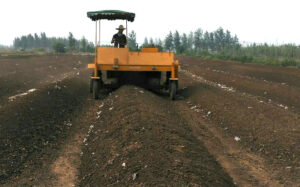
windrow compost turner for cow dung compost
Step 5: Watering the compost pile Cow manure compost needs to be kept moist, but not too wet. Water the compost pile regularly to keep it moist. If the compost pile is too wet, it can become anaerobic, which can slow down the decomposition process. Aim for a moisture content of around 50%.
Step 6: Checking the temperature of the compost pile As the cow manure compost decomposes, it will generate heat. Check the temperature of the compost pile regularly using a compost thermometer. The ideal temperature for composting cow manure is between 120 and 150 degrees Fahrenheit. If the temperature is too low, the compost pile may not decompose properly. If the temperature is too high, it can kill the beneficial microorganisms that break down the compost.
Step 7: Harvesting the compost After several weeks or months, the cow manure compost will be ready to use. The compost will be dark brown and crumbly, with a rich earthy smell. Use a garden fork to harvest the compost from the bottom of the pile. Spread the compost over your garden beds or mix it with potting soil to enrich it with nutrients.
In conclusion, making cow manure compost is a simple process that requires a little patience and effort. By following these steps, you can turn cow manure into a nutrient-rich soil amendment that will benefit your plants and the environment.
Of course, you can check this page for more details about how to make cow manure compost!
The 3 Efficient Methods In Fertilizer Production
Producing fertilizer can be done in several different ways. It just depends on what you are trying to achieve. The production of fertilizer pellets is one way that you can create fertilizer you can use now as well as in the future. Pellets are likely to last for several years, allowing you to fertilize your garden or crops for several subsequent seasons. There are three efficient methods by which you can produce fertilizer pellets, methods that are both affordable and easy to use.
Different Types Of Fertilizers You Can Produce
You can produce fertilizer in several different ways. However, you have to choose the type of fertilizer that you would like to focus upon. Many of the most popular ones are nitrate-based. This is because nitrogen is often the most extracted nutrient from soil that is used by most crops. The addition of fertilizer to the soil may include phosphorus and potassium. This is why NPK fertilizer is used so heavily. Finally, there are fertilizers that will have micronutrients, calcium, sulfur, and also magnesium. Now let’s look at how to use npk steam granulation process.

How To Make Fertilizer
If you are doing this on a small scale, you can use many different products that you likely have at home. Epson salt, coffee grounds, eggshells, and even vinegar are components that can help you use basic method of compost making. However, if you are doing this on a large scale, you are going to need components such as sodium nitrate, urea, and other materials. When combined together, you can produce a substantial amount of this material.
Three Popular Ways To Make Fertilizer
How to process compound fertilizer? You can do this using compounds such as potassium, phosphorus and nitrogen. Secondary nutrients may also be added. These can be placed in a small-scale apparatus that will combine the materials together. Second, you can invest in a large-scale fertilizer production plant. This will involve the use of a mixer, granulator, fertilizer crusher, and even a packing machine. For the largest scale operations, you will also need to have a substantial driving mechanism. There should also be a screening device, as well as multiple silos, in order to contain this material. However, if this is a production of compound fertilizer, simply using baking powder, Epson salt, and a gallon of ammonia will get you started toward producing your own fertilizer for your plants or crops.

5 t/h NPK granulation line
Whether you choose to use a small-scale fertilizer production unit, or a full organic fertilizer plant factory, you can save a lot of money by producing this on your own. Instead of investing your money into what others are making, and having no control over their consistency, you can easily get started with a large or small fertilizer production plant. Any of these solutions will lead to the creation of fertilizer pellets that you can use for your crops. As long as you have an ample supply of manure that is composted, you can produce as much is you want in the process of making manure to granules.
Consider the Newest Types of Fertilizer Blender for Organic and Compound Fertilizer
Whether you’re interested in producing organic or compound fertilizer, you’ll want to make sure you use the right fertilizer blender. It’s likely that you’ll find new types of fertilizer blender to be the most suitable choices for your needs. If you’re seeking out the best available fertilizer, these are some of the things you’ll want to keep in mind.
Focus on Blenders That Are In Line With Your Needs
You’ll want to focus on factors like your production goals and the type of fertilizer you’ll be producing while considering your options. Your primary goal should be to find fertilizer mixers that are an excellent match for what you’re looking for.
It’s likely that you’ll find some exceptional options that aren’t what you’re looking for. By narrowing down your selection, you’ll be able to focus on products that you would be able to work with.

New blender for BB fertilizer
Set a Reasonable Budget
What are you prepared to spend on a suitable fertilizer blender? If possible, you’ll want to have a price range in mind. When you know what you’re willing to spend, you’ll be able to look at options that fall within that price range. You can find affordable fertilizer blenders at many different price points, and because of that, deciding on a budget ahead of time can be very helpful.
Of course, when you are settling on a budget, you’ll want to make sure that the budget you’ve selected is reasonable. If you’re not sure what you should spend, you may want to start by looking at newer options on the market. Once you have a better sense of what prices are like, you can settle on a budget that makes sense for you.
Consider the Pros and Cons
It’s easy to get caught up in all of the benefits you’ll be able to enjoy if you opt to work with a specific fertilizer blender. Although you should certainly look at the advantages of fertilizer blenders, you should also pay attention to the drawbacks.
You should always be confident that you have the full picture before you make a purchasing decision. Weigh your options and take a close look at what various products have to offer. Try to get a better sense of what it would be like to work with any of the blenders that you’re considering.
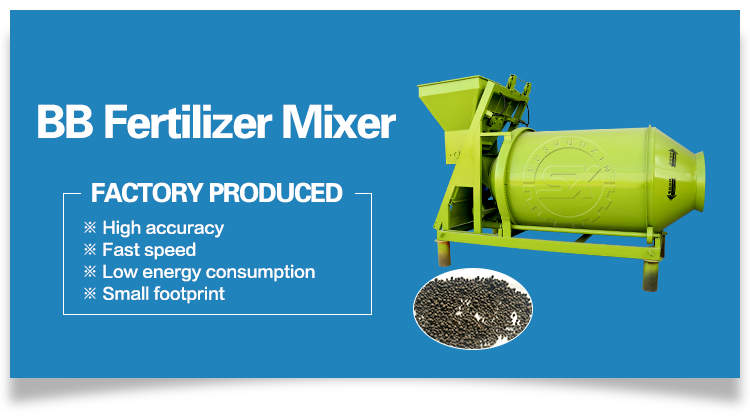
The advantages of BB fertilizer mixing machine
Don’t Ignore the Manufacturer
One of the disadvantages of purchasing a product that’s new to the market is that you might not know what to expect. If you’re looking for an indicator of quality, one of the most valuable resources you’ll find is the name of the manufacturer.
Many manufacturers have a long history of producing products like fertilizer blender, such as Shunxin Machinery. If you do decide to buy from a manufacturer like this, it’s likely that you’ll have a positive experience overall. Seek out a manufacturer that has a positive reputation and a strong track record.
If you’re looking at a fertilizer blender for organic and compound fertilizer, why not look at some of the newer options on the market? It’s likely that you’ll be impressed by the choices you find.
How to decide on a great Production Line Manufacturer of NPK Fertilizer?
Choosing a perfect production line manufacturer of NPK fertilizer can give you satisfaction. However, normally it takes time to identify a good manufacturer. It is way better to spend some time. Why? Choosing the wrong manufacturer might cost you more income. In reality, you are more likely to have a lot of difficulties with the maker. Therefore, do your homework prior to selecting a manufacturer.
Keep reading to figure out how to choose an excellent production line manufacturer of NPK fertilizer.

NPK fertilizer production line customized by FPC company
The Length Of Time Are You Currently in Business?
You can easily find production line manufacturers of NPK fertilizer. However, a number of these manufacturers do not possess any experience of this industry. It is actually difficult to have confidence in them. It is because they have got not proven themselves. Inquire further how long they are in this particular business. The most effective manufacturers are already making NPK fertilizer for many years. You can actually know their reputation. Choose a reputable manufacturer.
Do You Possess Customer References?
Unfortunately, some manufacturers are already making NPK fertilizer for quite a while, nonetheless they do not possess loyal customers. Also, it is hard to believe in them. Therefore, it is way better to inquire about potential manufacturers for their customer references. A selection of their current and previous customers are honest, to enable them to explain to you a little more about the maker. The ideal manufacturers will often have good customer references.
Can I Go To Your Facility?
Check out the facilities of potential NPK compound fertilizer production line manufacturers for more information on them. Some manufacturers allow their potential clients to go to their facilities. You are able to meet and speak to their staff within their facilities. In addition, examine the cleanliness of their facility. If their employees are friendly and their facility is clean, it is possible to choose that manufacturer. However, when you are uncomfortable conversing with their staff, it is possible to search for another manufacturer.

FPC equipment used for NPK fertilizer granulating
May I Obtain Your Quote?
Do you want to choose a cost-effective production line manufacturer of NPK fertilizer? Then, ask potential manufacturers for their quotes. Get quotes from multiple manufacturers to compare and contrast their prices. If a manufacturer sends cheap quotes, you should be cautious about the producer. It is way better to choose an affordable manufacturer. In reality, choosing a cost-effective manufacturer will save you more money in the long run.
What Is Your Local Area?
If you are searching ideal production line manufacturer online, then you should ask the producer the location with their offices and facilities. It is actually cheaper to use local manufacturers. Why? You will not spend excessive money on shipping. Whenever you can find local manufacturers, you are able to compare them. In fact, you can easily compare local manufacturers since you can easily find their clients.
Use the information above to choose a perfect production line manufacturer of NPK fertilizer. Go with a good manufacturer to acquire high-quality fertilizer. However, you can actually look for the best manufacturers. If you know people this industry, you may even ask them for recommendations. They could refer anyone to a good manufacturer.




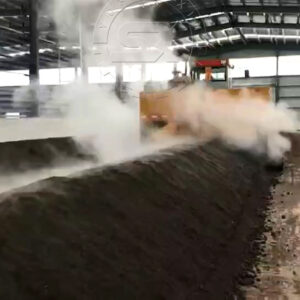
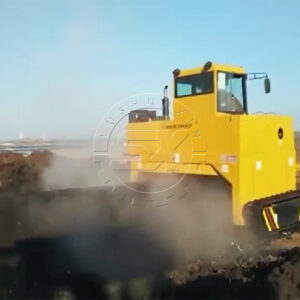
NPK Fertilizer Production Line Process
April 16, 2024
NPK compound fertilizer production line, NPK fertilizer plant, NPK fertilizer production line, NPK fertilizer production line manufacturer
Comments Off on NPK Fertilizer Production Line Process
cs
In the realm of agriculture, the term NPK is synonymous with growth and fertility. NPK stands for Nitrogen (N), Phosphorus (P), and Potassium (K), three crucial nutrients that plants need to thrive. An NPK fertilizer production line is a system that combines these elements into a single, balanced fertilizer, providing a complete nutrient package for various crops. In this blog, we’ll delve into the world of NPK fertilizer preparation, outlining the process, equipment, and benefits of this essential agricultural resource.
NPK fertilizer manufacturing equipment for sale
The NPK Fertilizer Production Process
NPK fertilizer manufacturing process is sophisticated, involving several key steps to ensure a quality product.
1.Raw Material Batching:The production line begins with the accurate batching of various raw materials that provide nitrogen, phosphorus, and potassium. Ingredients like ammonium nitrate, urea, ammonium chloride, ammonium sulfate, monoammonium phosphate, diammonium phosphate, potassium chloride, and potassium sulfate are commonly used.
2. Material Mixing:Once measured, the raw materials are thoroughly mixed to create a homogeneous blend. Uniform mixing is crucial as it ensures that each granule contains the same NPK ratio. So you can make quality npk compound fertilizer.
3. Granulation:The mixed materials then enter a npk fertilizer granulator. The choice of granulation technology – drum, extrusion, or pan granulation – depends on the specific production requirements. This step is critical as it affects the size, shape, and texture of the final product.
4. Drying and Cooling: The granules are then dried to reduce moisture content, which enhances their stability and storage life. A rotary drying machine is typically used for this purpose. After drying, the granules are cooled to room temperature to prevent caking. The cooling process usually employs a rotary cooler.
5. Screening:Post-cooling, the granules are screened to separate the correctly sized particles from the over-sized or under-sized ones. The latter are often crushed and recycled back into the production line. This the the key to production of npk fertilizer with uniform size.
6. Coating:To improve the physical properties of the granules, such as moisture resistance and shelf life, a coating agent is applied.
7. Packaging:The final step involves packaging the NPK fertilizer into bags for distribution and sale. Automated packing machines ensure precision and efficiency in this process.
Equipment: The Backbone of Production
The heart of the NPK fertilizer production line is the NPK fertilizer equipment. Each step requires specialized machinery designed for high efficiency and accuracy. Robust construction and adaptability to different raw materials are essential features of this equipment. Modern production lines also incorporate advanced controls and automation to optimize the entire process and reduce manual labor. Click here to learn more.
The Benefits of NPK Fertilizers
NPK fertilizers are invaluable for modern farming practices. They provide a balanced nutrient supply, promoting healthier plant growth and increasing yields. Custom NPK formulations allow for targeted applications based on soil type and crop requirements. Furthermore, NPK fertilizers enhance the soil’s nutrient-holding capacity, improving its long-term fertility. If you want to make NPK fertilizer , you can visit https://www.fertilizerbusinessplan.com/how-to-prepare-npk-fertilizer/
Sustainability and Environmental Considerations
As the demand for food rises, so does the need for sustainable farming practices. NPK fertilizer production lines must incorporate environmentally friendly techniques, reducing waste and emissions. Precision in the formulation and application of NPK fertilizers also minimizes nutrient runoff, which can lead to water pollution.
Conclusion
An NPK fertilizer production line is a strategic investment in the future of agriculture. It ensures the delivery of high-quality, nutrient-rich fertilizers that support sustainable farming and food security. With the right equipment and process management, an NPK production line can be both an environmentally responsible and economically viable venture for those looking to make a meaningful impact in the agricultural sector.
how to make npk fertilizerNPK blending fertilizer machineNPK compound fertilizer making processNPK equipment priceNPK fertilizer granulatornpk fertilizer plant design